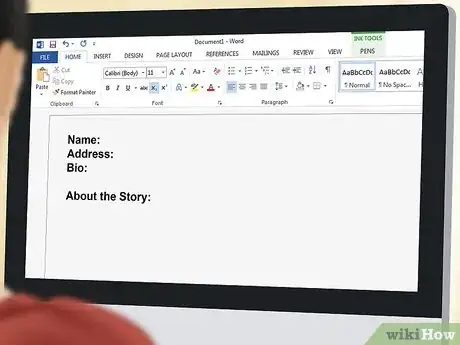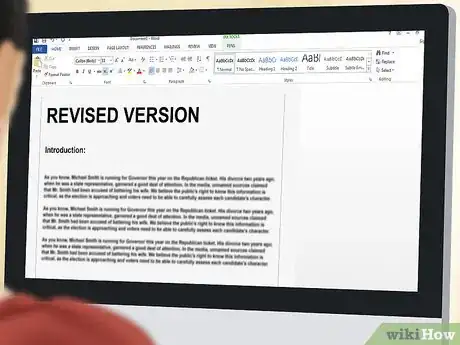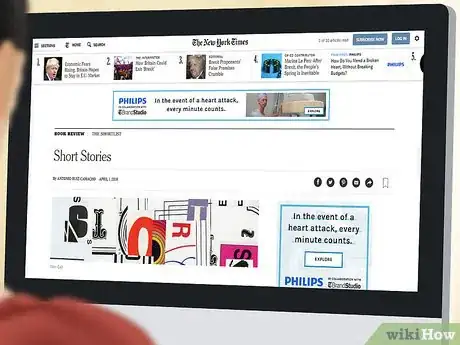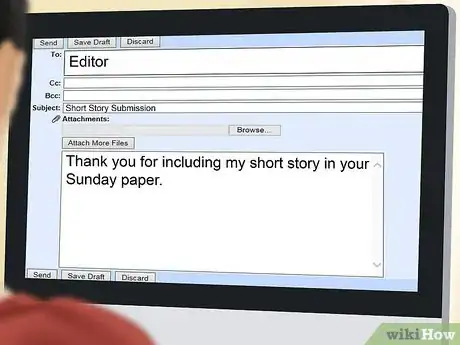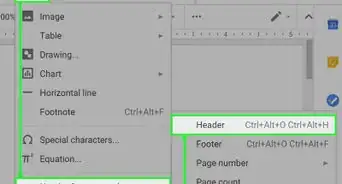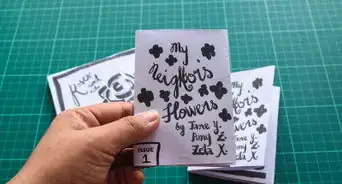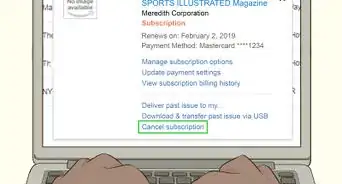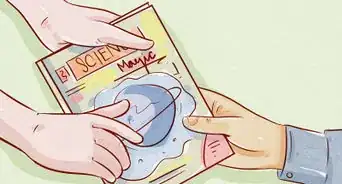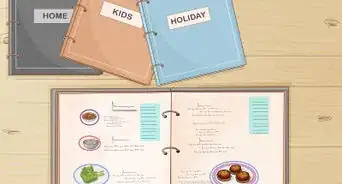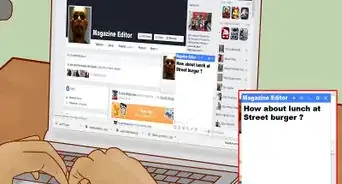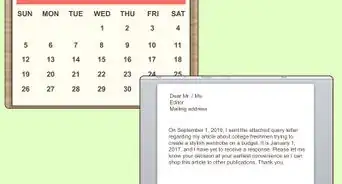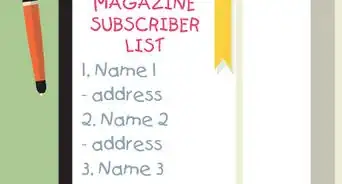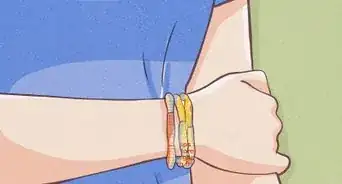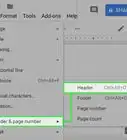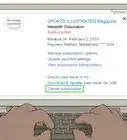This article was co-authored by Melessa Sargent. Melessa Sargent is the President of Scriptwriters Network, a non-profit organization that brings in entertainment professionals to teach the art and business of script writing for TV, features and new media. The Network serves its members by providing educational programming, developing access and opportunity through alliances with industry professionals, and furthering the cause and quality of writing in the entertainment industry. Under Melessa's leadership, SWN has won numbers awards including the Los Angeles Award from 2014 through 2021, and the Innovation & Excellence award in 2020.
This article has been viewed 105,914 times.
Are you getting ready to send your short story in for publication? Your story has a message, and you want it to be heard. Different magazines have different rules, and you should do your best to follow them. In this article, you will find out how to get your story ready to publish and the best places to send it so that you increase your chances of getting accepted.
Steps
Preparing Your Story
-
1Write a cover letter. Whether you're submitting your story over the internet or printing it and mailing it in, including a cover letter helps the editors keep tabs on your submission and remind them what it is about after reading other submissions. The cover letter should include your name and address, maybe your bio, as well as a quick look at the story.[1]
- The brief look at your story is not a summary. Rather, limit this to 25 words and quickly explain who the main character is and what the conflict is about.
- Address the letter to the editor by name. You can usually find the names of editors in the “About” sections of magazine websites or in books previously published.
-
2Write a brief bio about yourself. In case your submission is chosen, the editors may want to include a short bio about you, about 3 sentences long. To prevent them from having to do more work by asking you for a bio once they are ready to publish, furnish them with one in your cover letter. Keep this bio about your work, not your likes and dislikes.[2]
- You may want to list where you live, work, and where else you have been published. If you've never been published, focus on your experience and education.
Advertisement -
3Avoid decorative fonts. Decorative fonts like script or cursive make your writing unprofessional and your words difficult to read. Since the industry standard is plain, clear fonts like Calibri and Times, your submission should reflect understanding of this. If you want to be taken seriously, be serious about your font.[3]
- Also avoid creative font colors and varying sizes of font.
-
4Make sure you revise. No matter what writing style editors prefer, they all like to get stories that are polished--and that means proofreading. Also look at your story for awkward wording and redundancy to boost the story's appeal.
- Take into account that many editors don't like to see overwriting. Paring down your extra adjectives and being conservative with adverbs can keep your language simple yet engaging.[4]
- One way to trim the fat from your writing is to use simple dialogue tags like “said” instead of flowery verbs like “uttered.”
-
5Record where you submit. Write down or type up a list of where you send your stories and when. This way, if you send the same story to multiple magazines, it will be easy to figure out who to tell if your story gets accepted. You can't have your work published in more than one place at a time.
- If you do submit the same story to different magazines at the same time, inform the editors in your cover letter that it is a “simultaneous submission” and assure them that you will inform them if your story is chosen elsewhere before they get to it.
- Some journals and magazines do not accept simultaneous submissions. Such magazines will sometimes automatically reject your story if this is the case. Read closely when you send in your story to make sure it is ok to send it to more than one place at the same time.
Knowing Where to Submit
-
1Read the magazine. One of the best ways to reduce your risk of getting rejected is to read the magazine you want to be published in. Some writers refer to this as “research,” and it truly is the only way to tell if your story will be a good fit for the magazine. Read the short stories they publish and look for tone and writing style. If yours doesn't match, it is doubtful you will be published.
- Another way to find a magazine that will fit the style of your story is to look at the publication history of your favorite contemporary author and see what magazines they submit to. Chances are that your style models theirs, so magazines that took their story might accept yours.
-
2Read submission guidelines. Another way to make sure you don't get immediately rejected is to read the submission guidelines. For example, many magazines only publish particular genres, and others change what kind of stories they want every few months. If your story doesn't meet the guidelines, you will quickly be rejected and perhaps even labeled as a lazy submitter.[5]
- Submission guidelines are usually posted on the same page as the online submission portal or near the address where editors want stories received.
-
3Learn the types of magazines that take stories. Literary magazines, usually either university or indie presses, are mainly the ones who take short stories. There are many other magazines out there, from scientific to pop culture, but most of these magazines aren't looking for short stories. Focus on finding literary magazines.
- Literary magazines aren't the only magazines that take short stories. The New Yorker, for example, has a short story section.
- There are many articles on the internet that compile lists of magazines that accept stories. Find one of these lists to get started.[6]
- Some magazines advertise for submissions to “contests” rather than directly to their magazines, so include the word “contest” in an internet search for magazines to submit to.
-
4Find submission portals. Look on the websites of different magazines to figure out how and where to submit your story. Some websites have submission portals where you simply upload your story, whereas others require you to mail in a paper copy.
- If the latter is required, the address to send the story will be published on the magazine's website or can be obtained over the phone and in previous magazine printings.
Responding to the Results
-
1Be ok with rejection. It can feel devastating to be rejected by a magazine, especially when you have put a lot of work into a story. But don't shut down. Rejections can happen for more reasons than simply that your story “wasn't good.” You may have misinterpreted the submission guidelines or been a bad fit for the magazine. Get back out there and find other magazines to submit to.
- Don't try to contact a magazine that has rejected your story. This displays immaturity and a misunderstanding of how the publishing industry works.
- You don't have to steer clear of a magazine just because they rejected one story. Unless they ask you to stop submitting, you can continue to submit other stories.
- The truth is that the publishing industry is very competitive, and even small presses get flooded with submissions. As a result, almost all submissions get rejected. Don't take it personally.
-
2Try again with other magazines if you are rejected. Keep submitting your stories to magazines. If you are a strong writer, one day you will most likely be accepted. Find other writers to encourage you when you get discouraged, and revise your stories. You can even tailor a story to fit the style of a particular magazine to increase your odds of being accepted.[7]
-
3Send the editor what they need if accepted. Once you get accepted, the editors might want additional items from you, like your approval for edits they want to make. These will more than likely be formatting and proofreading changes rather than changes to the meaning of your words.
- Send a thank you letter when accepted. A thank you email works, but a real letter makes more of a lasting impact, which can increase your reputation and odds of getting published again.
-
4Buy copies of the magazine you are published in. Even though you are a writer in a publication and may receive free copies of the magazine as a result, it is polite to purchase a few copies. This helps the magazine stay running and gives you more copies to circulate among friends and colleagues.
Expert Q&A
-
QuestionHow can I get help publishing a story?
 Melessa SargentMelessa Sargent is the President of Scriptwriters Network, a non-profit organization that brings in entertainment professionals to teach the art and business of script writing for TV, features and new media. The Network serves its members by providing educational programming, developing access and opportunity through alliances with industry professionals, and furthering the cause and quality of writing in the entertainment industry. Under Melessa's leadership, SWN has won numbers awards including the Los Angeles Award from 2014 through 2021, and the Innovation & Excellence award in 2020.
Melessa SargentMelessa Sargent is the President of Scriptwriters Network, a non-profit organization that brings in entertainment professionals to teach the art and business of script writing for TV, features and new media. The Network serves its members by providing educational programming, developing access and opportunity through alliances with industry professionals, and furthering the cause and quality of writing in the entertainment industry. Under Melessa's leadership, SWN has won numbers awards including the Los Angeles Award from 2014 through 2021, and the Innovation & Excellence award in 2020.
Professional Writer Reach out and join networking groups where you can meet other writers and people in the publishing industry. There are even online groups like this, which is great if you're stuck inside during quarantine! Once you meet a few people, you can get leads on magazines that are seeking submissions.
Reach out and join networking groups where you can meet other writers and people in the publishing industry. There are even online groups like this, which is great if you're stuck inside during quarantine! Once you meet a few people, you can get leads on magazines that are seeking submissions. -
QuestionCan you just pay to get something published?
 Melessa SargentMelessa Sargent is the President of Scriptwriters Network, a non-profit organization that brings in entertainment professionals to teach the art and business of script writing for TV, features and new media. The Network serves its members by providing educational programming, developing access and opportunity through alliances with industry professionals, and furthering the cause and quality of writing in the entertainment industry. Under Melessa's leadership, SWN has won numbers awards including the Los Angeles Award from 2014 through 2021, and the Innovation & Excellence award in 2020.
Melessa SargentMelessa Sargent is the President of Scriptwriters Network, a non-profit organization that brings in entertainment professionals to teach the art and business of script writing for TV, features and new media. The Network serves its members by providing educational programming, developing access and opportunity through alliances with industry professionals, and furthering the cause and quality of writing in the entertainment industry. Under Melessa's leadership, SWN has won numbers awards including the Los Angeles Award from 2014 through 2021, and the Innovation & Excellence award in 2020.
Professional Writer You can, but you're going to miss out on a large part of the process as a writer!
You can, but you're going to miss out on a large part of the process as a writer! -
QuestionDo "volunteer" writers of articles get paid or not?
 Community AnswerIt depends on the magazine. Usually it will say in the submission guidelines whether or not they pay. Some magazines "pay" you with a free subscription or free copies of the issue in which your article appears.
Community AnswerIt depends on the magazine. Usually it will say in the submission guidelines whether or not they pay. Some magazines "pay" you with a free subscription or free copies of the issue in which your article appears.
References
- ↑ http://www.writersdigest.com/uncategorized/how-to-get-a-short-story-published-like-a-pro
- ↑ http://www.writersdigest.com/uncategorized/how-to-get-a-short-story-published-like-a-pro
- ↑ http://www.writersdigest.com/uncategorized/how-to-get-a-short-story-published-like-a-pro
- ↑ http://www.writersdigest.com/uncategorized/how-to-get-a-short-story-published-like-a-pro
- ↑ http://www.writersdigest.com/uncategorized/how-to-get-a-short-story-published-like-a-pro
- ↑ http://thewritelife.com/where-to-submit-short-stories/
- ↑ http://www.writersdigest.com/uncategorized/how-to-get-a-short-story-published-like-a-pro
About This Article
Before submitting your story to a magazine, read different publications to figure out where your story "fits" best. Look for university or indie presses, or magazines that are asking for submissions to story contests. When you've found a good fit, draft a cover letter that includes your contact information and a quick, 25-word overview of your story. Use a clean, professional font, like Calibri or Times, and include a short, three-sentence bio for the editors to use if you’re published. To learn more, such as how to follow the magazine's submission guidelines for your story, keep reading the article!
